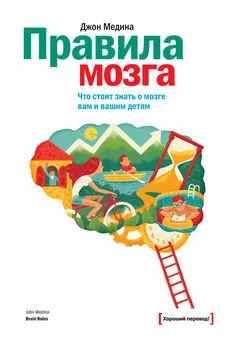Стивен Хэйне - ДНК – не приговор. Удивительная связь между вами и вашими генами
- Название:ДНК – не приговор. Удивительная связь между вами и вашими генами
- Автор:
- Жанр:
- Издательство:Литагент МИФ без БК
- Год:2019
- Город:Москва
- ISBN:978-5-00146-004-6
- Рейтинг:
- Избранное:Добавить в избранное
-
Отзывы:
-
Ваша оценка:
Стивен Хэйне - ДНК – не приговор. Удивительная связь между вами и вашими генами краткое содержание
ДНК – не приговор. Удивительная связь между вами и вашими генами - читать онлайн бесплатно ознакомительный отрывок
Интервал:
Закладка:
362
Обсуждение этого вопроса см.: Nisbett, R. E. (2009). Intelligence and how to get it . New York, NY: W. W. Norton; and Stoolmiller, M. (1999). Implications of the restricted range of family environments for estimates of heritability and nonshared environment in behavior-genetic adoption studies. Psychological Bulletin , 125, 392–409.
363
Nisbett, R. E. (2009). Intelligence and how to get it . New York, NY: W. W. Norton.
364
Stoolmiller, M. (1999). Implications of the restricted range of family environments for estimates of heritability and nonshared environment in behavior-genetic adoption studies. Psychological Bulletin , 125, 392–409.
365
Dillman, D. A. (1978). Mail and telephone surveys: The Total Design Method . New York, NY: Wiley. Обсуждение см.: Nisbett, R. E., Aronson, J., Blair, C., Dickens, W., Flynn, J., Halpern, D. F., et al. (2012). Intelligence: New findings and theoretical developments. American Psychologist , 67, 130–159.
366
Подробный обзор литературы по теме см.: Henrich, J., Heine, S. J., & Norenzayan, A. (2010). The weirdest people in the world. Behavioral and Brain Sciences , 33, 61–83.
367
Обсуждение этого вопроса см.: Nisbett, R. E. (2009). Intelligence and how to get it . New York, NY: W. W. Norton. P. 37–38.
368
Greulich, W. W. (1957). A comparison of the physical growth and development of American-born and native Japanese children. American Journal of Physical Anthropology , 15, 489–515.
369
Nisbett, R. E., Aronson, J., Blair, C., Dickens, W., Flynn, J., Halpern, D. F., et al. (2012). Intelligence: New findings and theoretical developments. American Psychologist , 67, 130–159; Duyme, M., Dumaret, A., & Tomkiewicz, S. (1999). How can we boost IQs of «dull» children? A late adoption study. Proceedings of the National Academy of Sciences, USA , 96, 8790–8794; Moore, E. C. J. (1986). Family socialization and the IQ test performance of traditionally and transracially adopted Black children. Developmental Psychology , 22, 317–326; Van Ijzendoorn, M. H., Juffer, F., & Poelhuis, C. W. K. (2005). Adoption and cognitive development: A meta-analytic comparison of adopted and nonadopted children’s IQ and school performance. Psychological Bulletin , 131, 301–316.
370
Brockman, J. (Ed). (2006). What is your dangerous idea? New York, NY: Harper.
371
Herrnstein, R. J., & Murray, C. (1994). The bell curve . New York, NY: Free Press.
372
Snyderman, M., & Rothman, S. (1988). The IQ controversy: The media and public policy . New Brunswick, NJ: Transaction Books.
373
Rosenberg, N. A., Pritchard, J. K., Weber, J. L., Cann, H. M., Kidd, K. K., Zhivotovsky, L. A., et al. (2002). Genetic structure of human populations. Science , 298, 2381–2385.
374
Dickens, W. T., & Flynn, J. R. (2006). Black Americans reduce the racial IQ gap: Evidence from standardization samples. Psychological Science , 17, 913–920.
375
Nisbett, R. E., Aronson, J., Blair, C., Dickens, W., Flynn, J., Halpern, D. F., et al. (2012). Intelligence: New findings and theoretical developments. American Psychologist , 67, 130–159.
376
Ogbu, J. U. (1994). Minority education and caste. The American system in cross-cultural perspective . New York, NY: Academic Press.
377
Можно найти и другие подтверждения различий в образовательных возможностях между людьми разных рас и их влияния на интеллект. У черных детей, усыновленных белыми семьями, показатели IQ были примерно на 13 пунктов выше, чем у черных детей, воспитываемых в приемных семьях афроамериканцев. Следует отметить, что те усыновленные, у которых оба биологических родителя были темнокожими, не отличались по набранным баллам теста на интеллект от тех приемных детей, у которых один из родителей был черным, а второй – белым. Это дополнительный аргумент в пользу отказа от расовых теорий различия IQ (см.: Moore, E. G. J. (1986). Family socialization and the IQ test performance of traditionally and transracially adopted Black children. Developmental Psychology , 22, 317–326).
378
Nisbett, R. E., Aronson, J., Blair, C., Dickens, W., Flynn, J., Halpern, D. F., et al. (2012). Intelligence: New findings and theoretical developments. American Psychologist , 67, 130–159; Duyme, M., Dumaret, A., & Tomkiewicz, S. (1999). How can we boost IQs of «dull» children? A late adoption study. Proceedings of the National Academy of Sciences, USA , 96, 8790–8794; Moore, E. C. J. (1986). Family socialization and the IQ test performance of traditionally and transracially adopted Black children. Developmental Psychology , 22, 317–326; Van Ijzendoorn, M. H., Juffer, F., & Poelhuis, C. W. K. (2005). Adoption and cognitive development: A meta-analytic comparison of adopted and nonadopted children’s IQ and school performance. Psychological Bulletin , 131, 301–316.
379
См.: Flynn, J. R. (2007). What is intelligence? Cambridge, UK: Cambridge University Press.
380
Pietschnig, J., & Voracek, M. (2015). One century of global IQ gains: A formal meta-analysis of the Flynn Effect (1909–2013). Perspectives on Psychological Science , 10, 282–306.
381
Trahan, L., Stuebing, K. K., Hiscock, M. K., & Fletcher, J. M. (2014). The Flynn Effect: A Meta-analysis. Psychological Bulletin , 140, 1332–1360. Впрочем, некоторые исследователи полагают, что кривая роста интеллекта выравнивается немного раньше (Pietschnig, J., & Voracek, M. (2015). One century of global IQ gains: A formal meta-analysis of the Flynn Effect (1909–2013). Perspectives on Psychological Science , 10, 282–306).
382
См.: Nisbett, R. E., Aronson, J., Blair, C., Dickens, W., Flynn, J., Halpern, D. F., et al. (2012). Intelligence: New findings and theoretical developments. American Psychologist , 67, 130–159.
383
Healy, J. M. (1990). Endangered minds: Why children dont think and what we can do about it . New York: Simon & Schuster.
384
Goldin, C. (1998). America’s graduation from high school: The evolution and spread of secondary schooling in the twentieth century. Journal of Economic History , 58, 345–374; US Census Bureau (2014). Некоторые статистические данные по США см.: 2012 American community survey 1-year estimates ( factfinder.census.gov/faces/tableservices/jsf/pages/productview.xhtml?pid=ACS_12_1YR_DP02&prodType=table).
385
Johnson, S. (2005). Everything bad is good for you . New York, NY: Riverhead Books.
386
Из альфа-теста времен Первой мировой войны, который использовался для оценки интеллекта грамотных новобранцев. См.: Rafter, N. (2008). The criminal mind . New York, NY: New York University Press. P. 136. См. также: Paul, D. B. (1995). Controlling human heredity: 1865 to the present . Amherst, NY: Humanity Books. P. 66.
387
Raven, J. C. (1965). Guide to using the coloured progressive matrices . London: H. K. Lewis.
388
Davis, H. E. (2014). Variable education exposure and cognitive task performance among the Tsimane forager horticulturalists . Doctoral dissertation. The University of New Mexico.
389
Gordon, P. (2005). Numerical cognition without words: Evidence from Amazonia. Science , 306, 496–499. См. также: Everett, D. L. (2005). Cultural constraints on grammar and cognition in Pirahã. Current Anthropology , 46, 621–634.
390
Эти данные еще не опубликованы. Они являются частью исследований, проведенных Дунканом Стиббардом-Хоксом и Кореном Апичелла. Личное сообщение Корена Апичелла от 9 июня 2015 г.
391
Raichlen, D. A., Wood, B. M., Gordon, A. D., Mabulla, A. Z. P., Marlowe, F. W., & Pontzer, H. (2014). Evidence of Levy walk foraging patterns in human hunter-gatherers. Proceedings of the National Academy of Sciences , 111, 728–733.
392
См.: Anderson, M. (1971). Bad seed. In S. Richards (Ed.), Best mystery and suspense plays of the modern theatre (p. 597–667). New York, NY: Dodd, Mead. P. 640.
393
Maudsley, H. (1874). Responsibility in mental disease (p. 25, 33). London: Henry S. King.
394
Rafter, N. (2008). The criminal brain (p. 65). New York, NY: New York University Press.
395
См.: Lombroso, C. (2006). Criminal man (M. Gibson & N. H. Rafter, Trans.). Durham, NC: Duke University Press. P. 51.
396
Horn, D. (2003). The criminal body: Lombroso and the anatomy of deviance . New York, NY: Routledge.
397
Тем не менее отношение ширины к высоте лица может помочь предсказать, какие хоккеисты будут вести себя наиболее агрессивно (Carre, J. M., & McCormick, C. M. (2008). In your face: facial metrics predict aggressive behavior in the laboratory and in varsity and professional hockey players. Proceedings of the Royal Society B , 275, 2651–2656).
398
Brunner, H. G., Nelen, M. R., van Zandvoort, P., Abeling, N. G., van Gennip, A. H., Wolters, E. C., et al. (1993). X-linked borderline mental retardation with prominent behavioral disturbance: Phenotype, genetic localization, and evidence for disturbed monoamine metabolism. American Journal of Human Genetics , 52, 1032–1039; Brunner, H. G., Nelen, M., Breakefield, X. O., Ropers, H. H., & van Oost, B. A. (1993). Abnormal behavior associated with a point mutation in the structural gene for monoamine oxidase A. Science , 262, 578–580.
399
Caspi, A., McClay, J., Moffitt, T. E., Mill, J., Martin, J., Craig, I. W., et al. (2002). Role of genotype in the cycle of violence in maltreated children. Science , 297, 851–854. Недавний метаанализ, подтверждающий надежность этого вывода, см.: Byrd, A. L., & Manuck, S. B. (2014). MAOA, childhood maltreatment and antisocial behavior: Meta-analysis of a gene-environment interaction. Biological Psychiatry , 75, 9–17.
Читать дальшеИнтервал:
Закладка:










